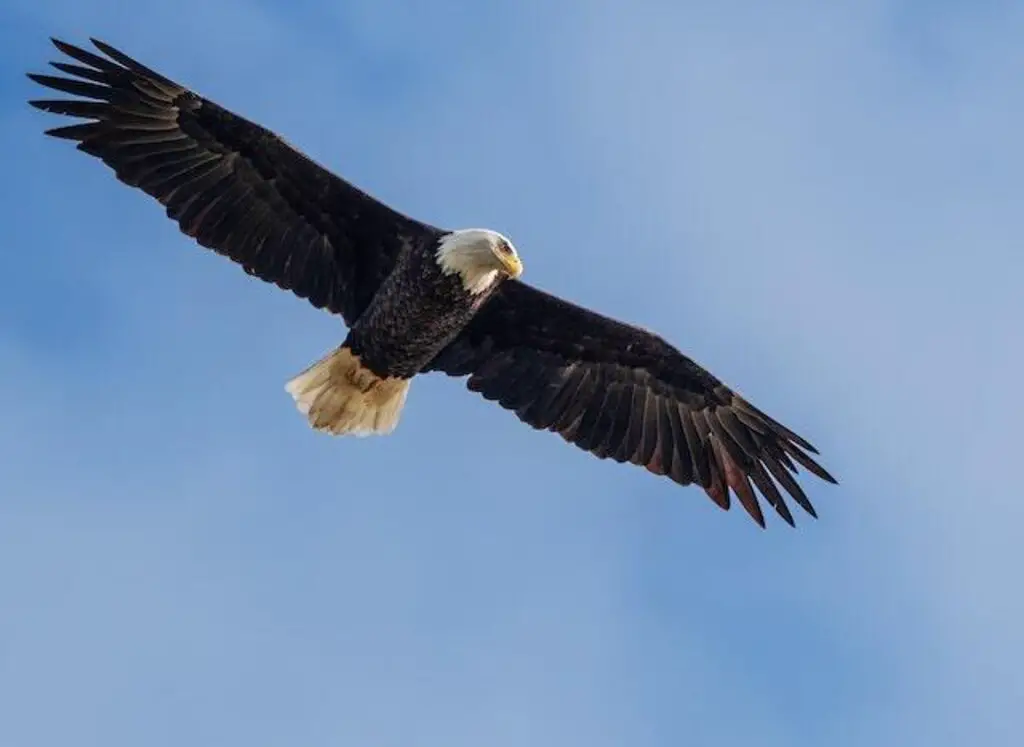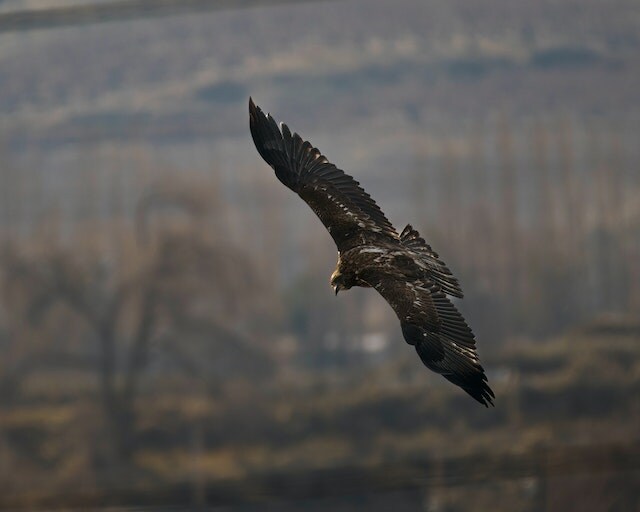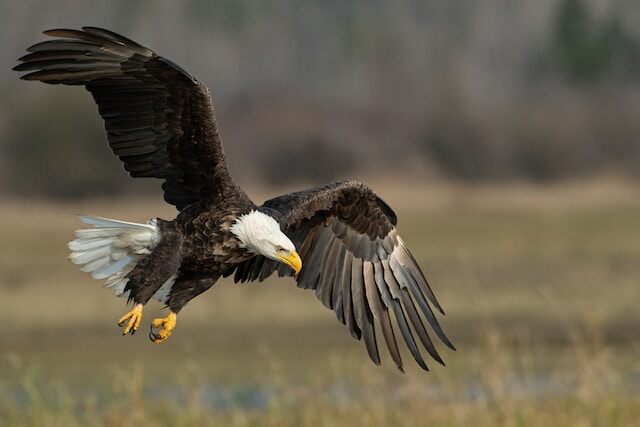How Do Eagles Fight? Brace yourself for an epic aerial showdown that would make even the greatest gladiators of the animal kingdom envy.
Eagles, the majestic birds of prey, are known for their impressive hunting skills and aerial acrobatics. But what about their fighting tactics and strategies?
In this article, we delve into the exhilarating world of eagle combat. From fiercely defending their territory to engaging in complex aerial battles, eagles reveal their survival instincts and social dynamics.
Discover the factors that influence their behavior and the outcome of their battles, unveiling the secrets of these extraordinary creatures.
So, are you ready to witness the thrilling tactics and maneuvers of eagle fights?
Join us on this captivating journey into the realm of the skies.
Table of Contents
- 1 Key Takeaways
- 2 The High-Flying Aerial Battles
- 3 How Do Eagles Fight
- 4 Eagle Combat Tactics
- 5 Size and Strength Differences
- 6 The Importance of Experience
- 7 The Role of Vocalizations
- 8 The Use of Talons
- 9 The Impact of Injuries
- 10 The Result of Fights
- 11 Frequently Asked Questions
- 11.1 How do eagles communicate with each other during a fight?
- 11.2 What kind of training do eagles undergo to improve their fighting skills?
- 11.3 Do eagles ever team up to fight against a common enemy?
- 11.4 How do environmental factors like wind and weather affect eagle fights?
- 11.5 What is the most common cause of injuries sustained during eagle fights?
- 12 Conclusion
- 13 Author
Key Takeaways
- Eagles fiercely defend their territory and food sources through combat tactics such as talon grappling and aerial acrobatics.
- Dominance plays a crucial role in determining which eagle will claim a particular territory, and eagles establish their place in the hierarchy through physical interactions and displays of dominance.
- The outcome of a combat between eagles is heavily influenced by the level of experience each eagle possesses, and injuries sustained during fights significantly affect the success rate of future hunting attempts.
- It is important to minimize injuries during fights to ensure the survival and well-being of eagles, and the need to protect eagle habitats is crucial to ensure their continued existence.

The High-Flying Aerial Battles
The high-flying aerial battles between eagles are a fascinating subject to study, particularly in terms of understanding the importance of territory and the role of dominance.
Eagles are known to fiercely defend their territories, which are critical for their survival.
Dominance plays a crucial role in determining which eagle will claim a particular territory, and it often involves intense aerial battles that can last for several minutes.
Overall, studying the behavior of eagles during these battles can provide valuable insights into the complex social dynamics of these majestic birds.
The Importance of Territory
Maintaining a defined territory is a critical aspect of eagle behavior and plays a vital role in their ability to secure resources and ensure reproductive success.
Eagles are highly territorial birds that fiercely defend their areas against intruders. This behavior is driven by the competition for limited resources such as prey and nesting sites.
Territory size and location vary depending on the species and habitat, but eagles will usually defend their territories from other eagles and potential predators.
The importance of territory is particularly evident during breeding season, when eagles need a safe and secure area to raise their young.
A well-defined territory also ensures that eagles have access to a consistent food supply, which is necessary for their survival.
Overall, the importance of territory highlights the competitive nature of eagle behavior and the need for these birds to maintain a stable and secure environment.
This behavior is closely linked to the role of dominance, which plays a crucial role in eagle interactions and will be explored in the subsequent section.
The Role of Dominance
One critical aspect of eagle behavior that influences their ability to secure resources and ensure reproductive success is their hierarchical system of dominance.
Eagles establish their place in the hierarchy through physical interactions and displays of dominance, such as vocalizations, posturing, and aggressive behaviors.
The importance of body language and submission signals play a significant role in these interactions, with the dominant eagle exhibiting a more upright posture, fluffed feathers, and a raised head, while the submissive eagle crouches low, tucks its head, and may even roll onto its back.
Maintaining a clear hierarchy allows eagles to efficiently allocate resources, such as food and nesting sites, and avoid unnecessary conflicts.
However, when disputes do arise, eagles may engage in combat tactics such as talon grappling and aerial acrobatics to establish dominance and protect their territory.
How Do Eagles Fight
Eagles fight through fierce aerial battles, employing complex tactics and maneuvers. They defend territory, establish dominance, and protect nesting sites.
These battles impact their survival, reproduction, and social structure. By understanding their fighting strategies, we gain insight into these majestic birds’ captivating lives.

Eagle Combat Tactics
Employing swift and precise movements, eagles strategically use their talons and beaks as weapons during combat.
Feather plucking is a common tactic used by eagles to weaken their opponent’s ability to fly.
This is accomplished by grabbing onto their opponent’s feathers and yanking them out, leaving the bird unable to fly and disoriented.
Talon strikes are another effective method of combat used by eagles, where they will use their sharp talons to either strike or grasp their opponent.
Eagles may also use their wings to intimidate their opponents or to create a barrier between themselves and their opponent.
Lastly, eagles will use their agility and speed to dodge their opponent’s attacks and then swiftly counterattack.
By understanding these tactics, it becomes clear that eagles are skilled hunters who use their physical abilities to their advantage during combat.
As we move into the next subtopic about size and strength differences, we will see how these tactics play a critical role in determining the victor of an eagle fight.
Size and Strength Differences
Size and strength differences play a crucial role in determining the outcome of a combat between eagles. The larger and stronger eagle has a significant advantage over its smaller and weaker opponent.
However, size and strength advantages are not always enough to ensure victory in a fight.
Eagles have developed survival strategies that they use in combat, such as swooping in quickly and attacking their opponent’s vulnerable areas.
Younger eagles, who may not have the same size and strength advantages as their more experienced counterparts, often rely on these tactics to survive.
As we will see in the subsequent section about the importance of experience, these strategies are not foolproof, and they can be overcome by an eagle with more experience.
Nonetheless, size and strength differences and survival strategies are essential factors in understanding how eagles fight.
The Importance of Experience
The outcome of a combat between eagles is heavily influenced by the level of experience each eagle possesses, highlighting the importance of this factor in understanding their fighting behavior.
The role of learning and adaptation in eagle fights cannot be overstated, as it allows them to develop and refine their fighting skills over time.
The impact of environment on fighting skills is also significant, as eagles living in areas with more competition are more likely to have developed stronger fighting abilities.
Experience is crucial in determining the outcome of a fight, as it allows eagles to anticipate their opponent’s moves and react accordingly.
This is particularly evident when two eagles of similar size and strength engage in combat, as the more experienced eagle is often able to gain the upper hand.
Understanding the role of experience in eagle fights is essential in comprehending their behavior and strategies.
With that said, the next section will discuss the role of vocalizations in eagle fights.

The Role of Vocalizations
The role of vocalizations in avian communication is a fascinating area of study. Two key types of vocalizations are warning calls and aggressive vocalizations.
Warning calls are used to alert others of potential danger in the environment, while aggressive vocalizations are used to establish dominance or defend territory.
Understanding the nuances and functions of these vocalizations can provide valuable insights into avian behavior and social dynamics.
Warning Calls
Eagles utilize warning calls as one of their communication strategies to alert others of potential threats in their territory.
These vocalizations can take on various forms, including high-pitched screeches, harsh screams, and staccato notes.
These warning calls are crucial for maintaining order and safety within the eagle community, as they allow individuals to respond quickly to potential danger.
When an eagle spots a predator or other threat, it will emit a loud and distinct warning call, which can alert other eagles to take flight or seek shelter.
This communication strategy helps to ensure that the entire community is aware of potential dangers and can take appropriate measures to protect themselves.
The use of warning calls is just one example of how eagles use vocalizations to communicate and establish their dominance within their territory.
In the next section, we will explore how eagles also use aggressive vocalizations to establish dominance and resolve conflicts.
Aggressive Vocalizations
Aggressive vocalizations are a common communication strategy used by eagles to establish dominance and resolve conflicts within their community.
This type of communication is often used during territorial disputes, where individuals must establish their dominance over a specific area.
Aggressive vocalizations can take many forms, including screeching, screaming, and calling out.
These calls are often accompanied by physical displays, such as flapping wings, puffing up feathers, and lowering the head.
Additionally, eagles may use aggressive calls to signal their presence and intimidate potential threats.
Overall, aggressive communication is a critical aspect of eagle behavior, allowing individuals to establish and maintain social hierarchies within their community.
In the next section, we will explore how eagles use their talons to further establish their dominance and resolve conflicts.

The Use of Talons
The use of talons is a crucial aspect of eagle combat.
These powerful appendages are known for their strength and sharpness, which allow eagles to inflict significant damage on their opponents.
Talon strikes can result in puncture wounds, lacerations, and even broken bones, making them a formidable weapon in the eagle’s arsenal.
Strength and Sharpness
With their powerful talons and razor-sharp beaks, these birds of prey are equipped to take down prey much larger than themselves.
Eagles possess incredible strength and agility, allowing them to swoop down from great heights and snatch their prey with precision.
When attacking, eagles can reach speeds of up to 200 miles per hour, displaying their incredible strength and sharpness.
To evoke an emotional response in the audience, consider the following:
1) Imagine the awe-inspiring sight of an eagle soaring through the sky, its wings spread wide, ready to strike at any moment.
2) Picture the intensity and focus in an eagle’s eyes as it zeroes in on its prey.
3) Visualize the sheer power and force generated by an eagle’s talons as it digs into its prey.
4) Think about the freedom that these birds represent, soaring high above the world below.
With such impressive abilities, it’s no wonder that eagles are revered as symbols of strength and freedom. As we move into the next section about the damage inflicted by eagles, it becomes clear that these predators are not to be underestimated.
Damage Inflicted
Strength and sharpness are important factors in eagle fights, but the damage inflicted during these battles is what ultimately determines the outcome.
Eagles use their talons and beaks to deliver powerful blows to their opponents, causing internal injuries that can be fatal.
These injuries can include punctured organs, broken bones, and internal bleeding.
However, eagles have an incredible ability to heal from these injuries, often returning to their normal activities within a few weeks.
Understanding the healing process of eagles is crucial in understanding the impact of injuries on their lives.

The Impact of Injuries
Injuries sustained during eagle fights significantly affect the success rate of future hunting attempts.
Studies show that eagles with previous injuries have a success rate of only 30% compared to the 70% success rate of uninjured eagles.
This means that the rehabilitation process and long-term effects of injuries are crucial for the survival of eagles.
Injured eagles may struggle with basic tasks such as hunting, flying, and even mating, making them more vulnerable to predation and starvation.
The impact of injuries on eagles is not limited to physical limitations but also psychological ones. Eagles with previous injuries may have lower confidence and a reduced ability to compete for resources.
Furthermore, the loss of an eagle’s partner during a fight can have a significant impact on their social behavior, leading to isolation and a decreased chance of finding a new mate.
These consequences highlight the importance of minimizing injuries during fights to ensure the survival and well-being of eagles.
The result of fights can have a long-lasting impact on the lives of eagles, making it crucial to understand the dynamics of eagle fights and how they can be prevented.
The Result of Fights
The outcome of eagle fights can have significant impacts on their future survival. These fights usually occur due to territorial disputes, where eagles engage in intense battles to protect their nesting sites or hunting grounds.
The fight outcomes can range from one eagle conceding defeat and leaving the territory, to both eagles sustaining injuries or even death.
The severity of injuries sustained during these battles can affect an eagle’s ability to hunt or defend their territory, potentially leading to starvation or loss of their nesting site.
It is crucial to understand the importance of these fights in the survival of eagles and the need to protect their habitats to ensure their continued existence.
| Fight Outcome | Consequences |
|---|---|
| Victory | Establish dominance |
| Defeat | Loss of territory |
| Injuries | Impaired hunting ability |
| Mating opportunities | Enhanced reproductive success |
| Social status | Influences within the eagle community |

Frequently Asked Questions
How do eagles communicate with each other during a fight?
During fights, eagles communicate through body language and vocalizations. Aggression triggers, such as territorial behavior, can influence these interactions. An analytical and scientific approach can reveal the fascinating details of this behavior to a curious audience seeking freedom.
What kind of training do eagles undergo to improve their fighting skills?
Training techniques for eagles usually involve simulated prey attacks to improve their muscle development and fighting skills. These techniques are based on scientific and analytical approaches and are designed to enhance the eagles’ natural predatory instincts.
Do eagles ever team up to fight against a common enemy?
Eagles are solitary birds and typically hunt alone. However, some species engage in group hunting and may defend their territory against intruders. Eagles do not typically team up to fight a common enemy, but will defend their territory against perceived threats.
How do environmental factors like wind and weather affect eagle fights?
The effect of wind and weather on eagle fights varies based on the individual bird’s hunting strategy. Visibility can be hindered by weather, while prey availability impacts whether eagles will engage in physical fights or resort to scavenging.
What is the most common cause of injuries sustained during eagle fights?
Injuries sustained during eagle fights are commonly caused by sharp talons, powerful beaks, and aggressive predator behavior during territorial disputes. Understanding the dynamics of these fights is crucial for conservation efforts and the preservation of eagle populations.

Conclusion
In conclusion, the aerial battles of eagles are a display of their combat tactics, size and strength differences, experience, vocalizations, talons, injuries, and the ultimate result of fights.
These majestic birds have evolved to be skilled hunters and fighters, using every tool at their disposal to defend territory and resources.
The outcome of a fight depends on various factors, including the experience of the combatants, their physical strength, and the severity of injuries sustained.
As these battles take place, the eagles’ vocalizations provide insight into their mental state, allowing us to better understand their behavior.
Through these battles, eagles demonstrate the fierce and competitive nature of the animal kingdom. Their tenacity and determination highlight the importance of strength and survival in the natural world.
The eagle’s fight is a metaphor for the ongoing battles that we face in our own lives, where we must use our skills and resources to overcome obstacles and challenges.
Just as the eagle uses its talons and vocalizations to defend its territory, we too must use our strengths and voices to protect our own interests and aspirations.
In this way, the eagle’s fight serves as a reminder of the resilience and determination that are essential for success in any arena.


